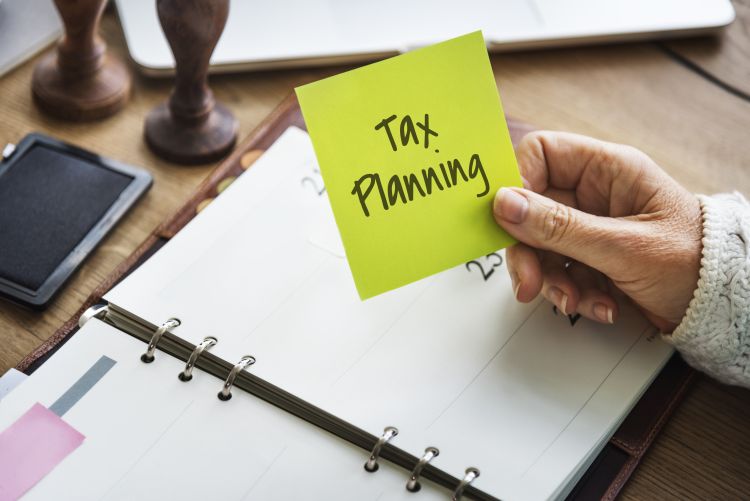
November 20, 2025

Timing of Income and Expenses: Businesses can strategically influence their 2025 tax position by accelerating expenses (like supply orders or maintenance) into the current year and/or deferring income into 2026.
Major Expensing Opportunities: The One Big Beautiful Bill Act (OBBBA) restored 100% bonus depreciation for qualifying property placed in service on or after January 19, 2025, and allows immediate expensing of domestic Research & Development (R&D) costs starting in 2025.
Structure and Credit Review: Companies should review their entity structure (S-corp/partnership vs. C-corp) due to the permanent 20% Qualified Business Income (QBI) deduction, and must act on expiring items like the Work Opportunity Tax Credit (WOTC) which is scheduled to end on December 31, 2025.
As 2025 winds down, many businesses are taking time to review year-end tax strategies. Recent changes from the One Big Beautiful Bill Act (OBBBA) restored several tax breaks and adjusted rules that will apply for the first time in the upcoming filing season. Companies should look closely at these updates to determine if they qualify to take advantage of these tax saving opportunities. For many there will be an opportunity to reduce taxes before year end. To help clients, prospects, and others, Wilson Lewis has summarized the key details below.
Income and expense timing remains one of the simplest ways to influence the current year’s tax position. Businesses will want to review whether it makes sense to bring forward costs that would normally occur early in 2026. Examples include supply orders, software renewals and routine maintenance. Some companies may also look at compensation timing for year-end bonuses.
Income timing follows the same general idea. Money that comes in before December 31 is treated as 2025 income. Money that comes in after January 1 is usually counted toward the next year. This can be a helpful lever if a business is looking to shift the tax burden from one year to another.
The return of 100% bonus depreciation is a major change under OBBBA. The new rule applies to qualifying property placed in service on or after January 19, 2025. Any qualifying equipment, software or building system placed in service by year-end is eligible for full expensing, so installation and testing will need to be completed before December 31.
Section 179 is another option. It gives businesses the opportunity to expense the full cost of qualifying purchases, subject to annual limits. This is often used for technological upgrades, vehicles, and improvements to the workspace.
Beginning in 2025, qualifying domestic research and development expenses can be deducted in full during the year the work takes place. This replaces the prior rule that required these costs to be amortized over five years. The new treatment applies to common activities such as developing new products, improving processes, building or updating software and testing new materials. Foreign research does not qualify.
Smaller companies, defined as those with average gross receipts of $31 million or less over the past three years, have additional flexibility. They may amend prior tax returns for 2022 through 2024 or take a one-time adjustment in 2025 or 2026 to account for previously capitalized R&D costs. Larger companies may accelerate any remaining deductions beginning in 2025.
Some organizations are revisiting entity choice as part of year-end planning. OBBBA makes the 20% qualified business income (QBI) deduction permanent, which is helpful for many S corporations and partnerships because it lowers the tax on pass-through income. The law also expands the rules for Section 1202 stock, which can make C-corporation status more appealing for newer or fast-growing companies that expect to bring in investors or plan for an eventual sale.
A year-end review typically includes multi-year tax modeling, expected cash needs, and how different structures affect owner distributions and future sale proceeds. This helps determine whether the current structure still makes sense or whether another option may be better for long-term planning.
Charitable giving will continue to be an important priority for many, but the tax rules that apply to those contributions change in 2026. High-income owners will see a small reduction in the deductible amount, and C corporations will need to give more than 1% of taxable income before any part of the contribution becomes deductible. These changes do not limit how much a business can give, but they will affect how much is deductible on next year’s return.
Because the tax value will differ after 2025, some businesses will want to review the timing of contributions they already plan to make. For those who prefer to take the deduction under current rules, completing the gift in 2025 may be a more favorable option.
Several federal incentives expire soon. The Work Opportunity Tax Credit (WOTC) is scheduled to end on December 31, 2025, so eligible new hires need to be certified this year for the credit to count. Section 179D, which offers deductions for energy-efficient building improvements, is still available but construction must begin by June 30, 2026, to qualify under the current rules. This applies to upgrades such as lighting, HVAC systems and building envelope improvements. Businesses planning these projects may want to review timelines now to make sure they meet the required start dates.
Contact Us
Year-end tax planning is one of the most effective ways for businesses to manage taxable income and improve cash flow. With several OBBBA provisions changing how and when deductions and credits apply, this is a good time to review your situation with a tax advisor. If you have questions about the information outlined above or need assistance with another tax or accounting issue, Wilson Lewis can help. For additional information call 770-476-1004 or click here to contact us. We look forward to speaking with you soon.